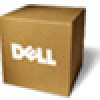Dell Optiplex-620 User Guide - Page 47
local bus, MB/sec, memory, memory address, memory mapping, memory module, modem, module bay, monitor - video card
 |
View all Dell Optiplex-620 manuals
Add to My Manuals
Save this manual to your list of manuals |
Page 47 highlights
LCD - liquid crystal display - The technology used by portable computer and flat-panel displays. LED - light-emitting diode - An electronic component that emits light to indicate the status of the computer. local bus - A data bus that provides a fast throughput for devices to the processor. LPT - line print terminal - The designation for a parallel connection to a printer or other parallel device. M Mb - megabit - (written as Mb) A measurement of memory chip capacity that equals 1024 Kb. Mbps - megabits per second - (written as Mbps) One million bits per second. This measurement is typically used for transmission speeds for networks and modems. MB - megabyte - A measurement of data storage that equals 1,048,576 bytes. 1 MB equals 1024 KB. When used to refer to hard drive storage, the term is often rounded to 1,000,000 bytes. MB/sec - megabytes per second - One million bytes per second. This measurement is typically used for data transfer ratings. memory - A temporary data storage area inside your computer. Because the data in memory is not permanent, it is recommended that you frequently save your files while you are working on them, and always save your files before you shut down the computer. Your computer can contain several different forms of memory, such as RAM, ROM, and video memory. Frequently, the word memory is used as a synonym for RAM. memory address - A specific location where data is temporarily stored in RAM. memory mapping - The process by which the computer assigns memory addresses to physical locations at start-up. Devices and software can then identify information that the processor can access. memory module - A small circuit board containing memory chips, which connects to the system board. MHz - megahertz - A measure of frequency that equals 1 million cycles per second. The speeds for computer processors, buses, and interfaces are often measured in MHz. modem - A device that allows your computer to communicate with other computers over analog telephone lines. Three types of modems include: external, PC Card, and internal. You typically use your modem to connect to the Internet and exchange e-mail. module bay - A bay that supports devices such as optical drives, a second battery, or a Dell TravelLite™ module. monitor - The high-resolution TV-like device that displays computer output. mouse - A pointing device that controls the movement of the cursor on your screen. Typically you roll the mouse over a hard, flat surface to move the pointer or cursor on your screen. ms - millisecond - A measure of time that equals one thousandth of a second. Access times of storage devices are often measured in ms.















